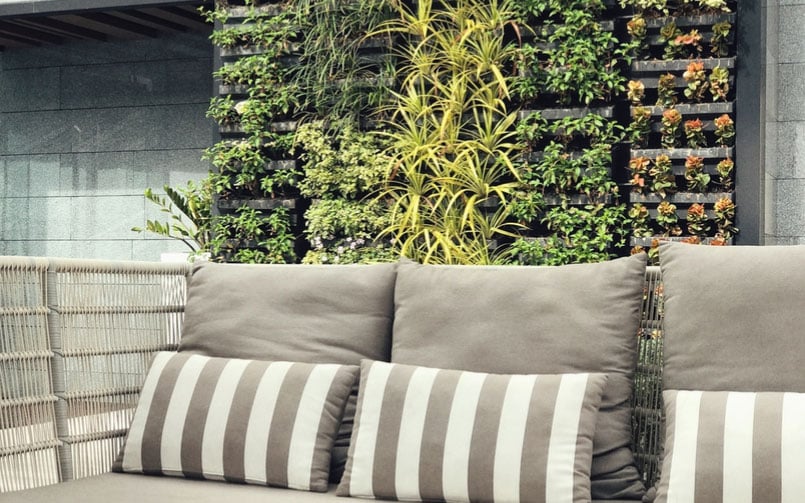Vertical planters come in all shapes, colors, and sizes. What they all have in common is that they are plants growing on a vertical axis, be it vines growing up a wall, or wall planters overflowing with greenery. Vertical gardens are used to dress up all types of spaces, from an intimate patio restaurant to backyards that are short on space but not on style.
To create a beautiful vertical garden, you need the right plants, along with proper setup and maintenance. The easiest way to score the beautiful look of a vertical garden is with wall planters. TerraCast wall planters offer the ideal way to score a beautiful green wall inside or outside.
5 Tips for Thriving & Long Lasting Vertical Gardens
Pick the Right Greens for Wall Planters
Certain plants are going to thrive on a wall while others may be ‘vertically challenged.’ Luckily, there’s no shortage of great options. In fact, there are even vegetables you can grow vertically such as beans, peas, cherry tomatoes, small pumpkins, and winter squash. Plus, annual vines make an excellent work of natural art as they weave up and down a vertical wall.
The best plants for vertical garden success? Plants that can grow well near one another without a high risk of developing fungal diseases. Avoid plants that need space and airflow to prevent fungal growth.
Put Plants in the Right Place
Also, take into consideration how much sun a wall gets and then pick plants that prefer the same weather trends. The amount of sun a wall gets depends on the direction it is facing. South facing walls get a lot of sunshine. Oppositely, north facing walls spend more time basking in the shade.
Wind is another weatherly concern you must take into consideration. Vertical plants have less protection from harsh winds, so it’s important to consider this. If a wall gets a lot of wind, seek out hardy plants that can handle it.
Additionally, keep in mind how tall plants will grow. This can help determine the right wall to place them on. Don’t forget to consider plant maintenance—how high can you comfortably reach to water planters?
Plants & Vines That Attach to Supports
For an extra pop, mix wall planters with a lush intertwining garden of vines. There are several types of climbing vines that’ll attach to surfaces, growing upwards and outwards. Different vines rely on unique methods to attach to surfaces. For instance, vines with aerial roots (one example is climbing hydrangea) naturally sprout a base structure from the sides of its stems to cling to surfaces. On the other hand, vines with tendrils use their leafless stems to wrap around things for support.
Plants naturally grow towards the sun. So, start by placing some vines horizontally. These vines will make a turn towards the sun at some point, but provide more texture and dimension to the wall because of starting off in a different direction.
Attach Planters Properly
Wall planters work best on solid walls or fences. If you cannot nail into a surface, consider using hanging chains to secure planters in place against a wall. Don’t underestimate the importance of a wall’s overall height and strength. The surface must be sturdy enough to support the weight of a garden. Keep in mind, gardens only get heavier with time as they grow larger, absorb more moisture, etc.
Always check weight loads before installing a vertical garden, especially for urban roof gardens and city terrace gardens.
How to Plant Successful Wall Planters
Once you have your wall planned and know how you’ll attach wall planters, it’s time to fill up planters with beautiful flowers.
- Start by filling wall planters with a few inches of nutritious soil. Potting soil is recommended because it has better water retention capabilities.
- Set your plants in the soil, careful not to damage roots or cause stress to the plant in the process.
- Then, add some more soil. Do not fill it up too high. You want soil to reach lower than the brim of the pot so there’s plenty of room to add water.
- Water your plants as much or as little as needed depending on recommended guidelines and weather conditions.
Looking for high quality and long lasting wall planters? Check out our Tuscany Wall Planters.

